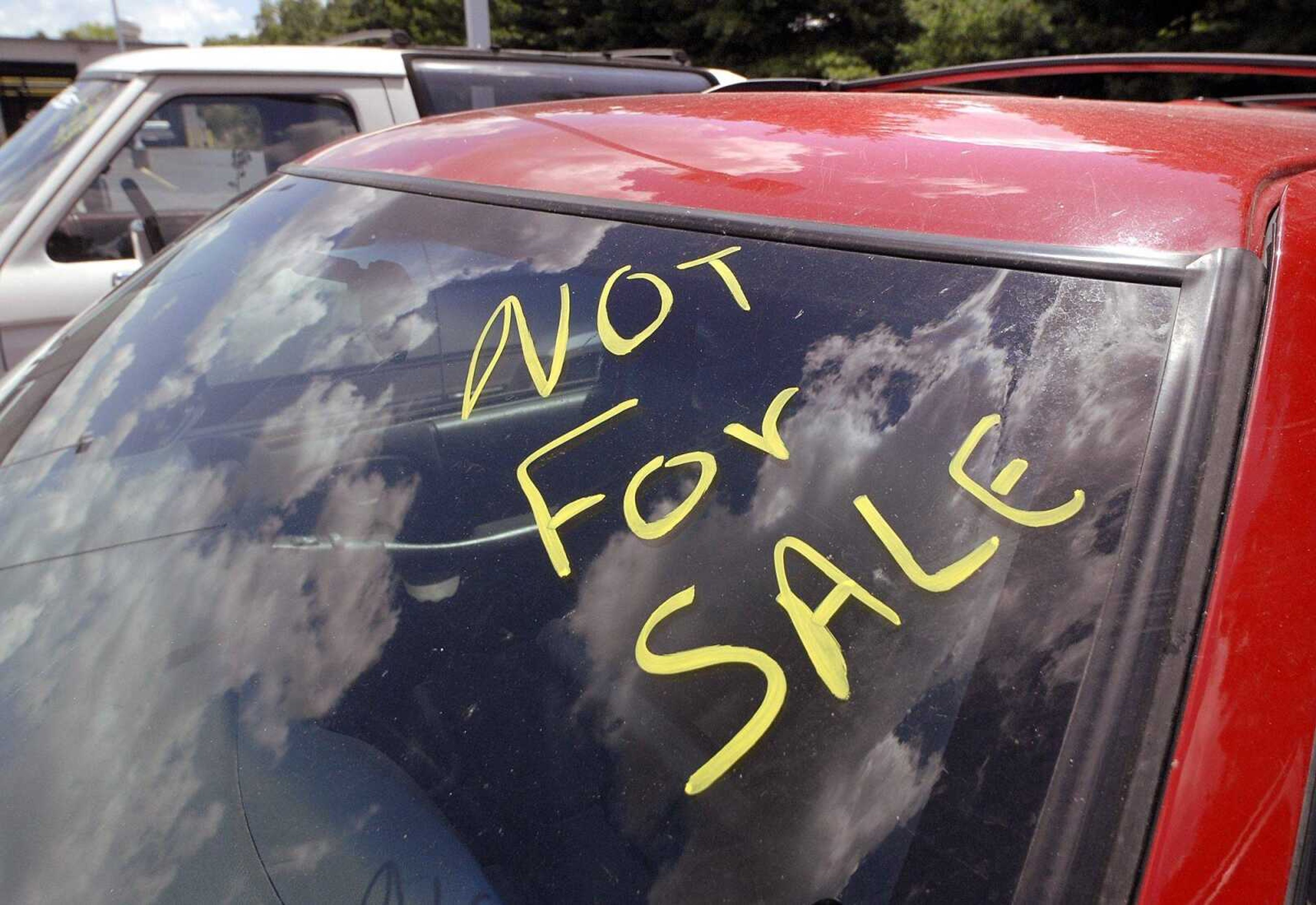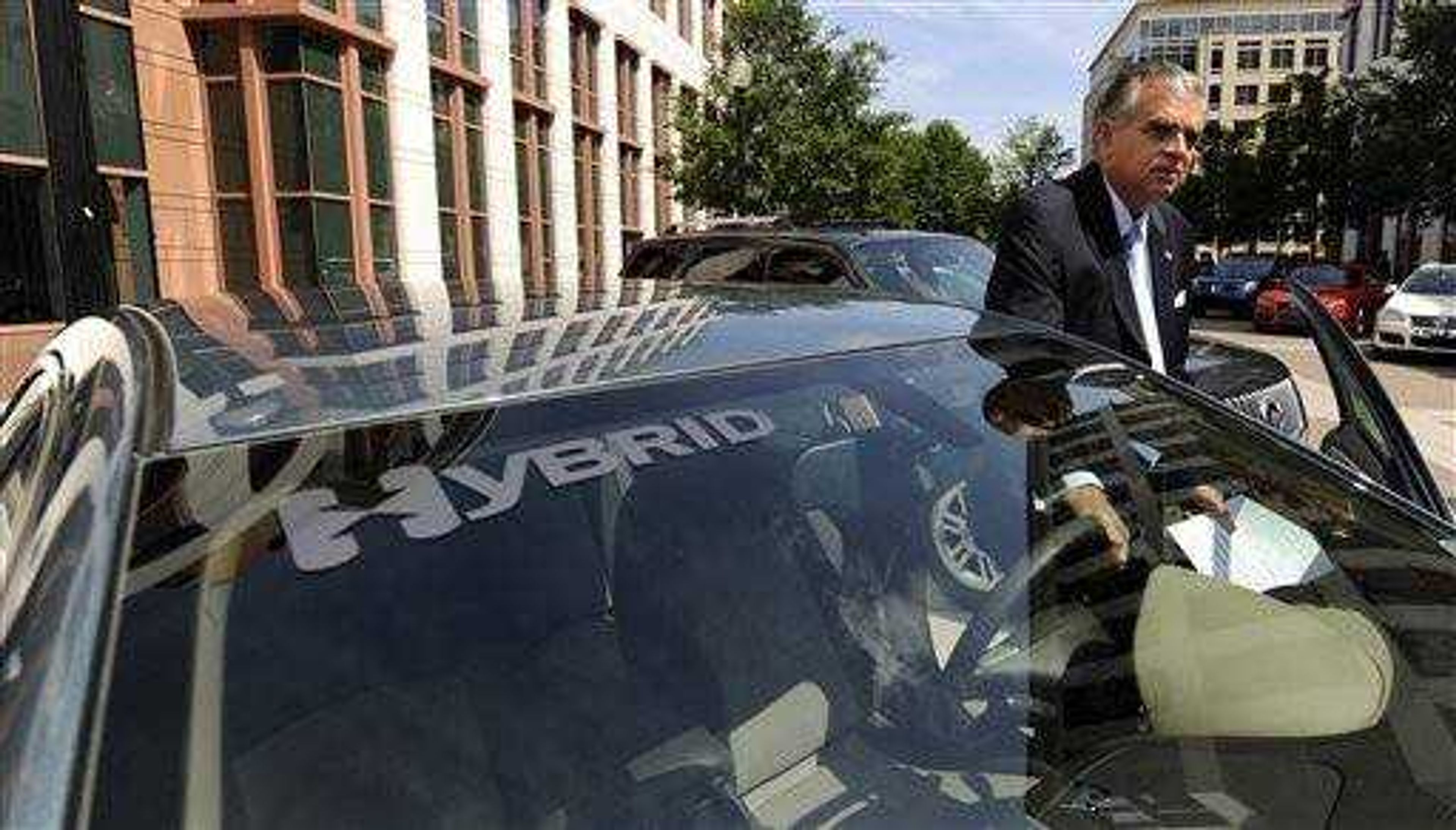Cash for Clunkers brings hope, skepticism from local car dealers
Congress approved the Car Allowance Rebate System, known as Cash for Clunkers, last month to boost automobile sales and help retire inefficient vehicles. Incentives are worth between $3,500 and $4,500 for cars and trucks that meet certain criteria.
Customer interest at Ward Hyundai has steadily increased since the government announced a plan that provides rebates to people trading in older cars for vehicles with higher gas mileage, a program which officially started Monday.
General sales manager Steve Pogue expects the trend to continue at the Cape Girardeau dealership. Ward took ownership of the former Cape Hyundai on June 25.
"This week should be crazy simply because there's been a huge promotion of it by the government," Pogue said. "Everyone is talking about it."

Congress approved the Car Allowance Rebate System, known as Cash for Clunkers, last month to boost automobile sales and help retire inefficient vehicles. Incentives are worth between $3,500 and $4,500 for cars and trucks that meet certain criteria.
The vehicles must be 1984 models or newer to be eligible for a trade-in rebate. They must also get 18 mpg or less in combined highway and city rating, based on the Environmental Protection Agency's new estimated mpg ratings, available at www.fueleconomy.gov.
The vehicle must be drivable, insured and licensed for at least 12 months, meaning those hoping to purchase a qualifying vehicle and then flip it through the program are out of luck.
The program runs through Nov. 1, or when funds are exhausted. $1 billion has been allotted to the program, which calls for taking 250,000 older vehicles off the road.
Even with the interest the plan has created, some area dealers say the program is not without its downfalls.
"I'll be glad when it's over because there's been confusion over the Cash for Clunkers," Pogue said. "We've had people get mad when they miss the qualifying mileage by one mile or their registration lapsed.
"But it's good for the car business because it's gotten a lot of people interested in purchasing cars," he said. "The bad thing is the government drug it out so long before they gave the money to the dealers."
Bob Neff, principal dealer of Ford Groves in Cape Girardeau and Jackson, expects the allocated funds to run dry before the November deadline hits. He said that while the average cars sold per dealer should be 12 to 13, it won't work out that way. He said larger dealers will sell more than smaller ones, who may be unable to sell any at all.
"It's the government," said Neff, whose dealerships were involved with about six trade-ins of older cars. "It's complicated, time consuming and riddled with land mines to screw up.
"That being said, we'll make it seamless for our customers," he said. "They'll get a great deal and hopefully Uncle Sam will pay us back. It's not a fix all, but every little bit helps."
Dr. Bruce Domazlicky, an economics professor at Southeast Missouri State University, is doubtful the program will have a significant effect on the environment but thinks it will boost sales to an industry in need of resurrection.
Because the new vehicles only need to get a few more miles per gallon to qualify, "any energy savings and pollution reduction probably will be small," Domazlicky said. "The program is likely to help the struggling auto industry some since it should help to spur purchases of new vehicles. Of course, the program is effective only to the extent that it causes some people to purchase new vehicles who otherwise would not have.
"That is the major problem with programs like these," he said. "Many people who were planning to buy a new auto anyway will get the benefit, so we have the government paying for something that was likely to happen anyway. It is also possible that the main effect is to shift purchases in time. That is, it induces people to buy a new auto a little earlier than they may have otherwise planned to do, which, given the current state of the economy, is probably a good thing."
For those customers holding out, Pogue advises them to take advantage of the deals soon.
"When the money is gone it's gone," Pogue said. "If people wait too long they'll be out of luck."
Mark Van Matre, owner of Van Matre Buick Pontiac GMC Cadillac, agreed.
"If you want to take advantage of it, you should do so immediately," he said. "A billion dollars sounds like a lot of money, but there are only so many cars that can go around. It's a very positive step for the car industry."
The Associated Press contributed to this report.
bblackwell@semissourian.com
388-3628
Does this affect you?
Have a comment?
Log on to semissourian.com
Got an old gas guzzler in the garage? Car shoppers can take advantage of new government incentives worth $3,500 to $4,500. Owners can scrap their clunker in exchange for a new, more fuel-efficient vehicle, and lop off thousands of dollars from the sticker price. Congress approved the Car Allowance Rebate System, or CARS, program last month to boost auto sales and attempt to retire some inefficient cars and trucks. Here's a look at the program:
Q: How do I qualify for the incentives?
A: For passenger cars, consumers can get $3,500 if the new vehicle gets at least 4 mpg more than the trade-in and $4,500 if the new vehicle gets at least 10 mpg more than the trade-in. For sport utility vehicles, pickup trucks or minivans, owners can get a $3,500 rebate if the new vehicle gets at least 2 mpg higher than the old vehicle. The rebate improves to $4,500 if the new vehicle gets at least 5 mpg higher than the trade-in. Large work trucks weighing at least 6,000 pounds can also qualify for rebates of $3,500 to $4,500.
Q: Can I get the clunker rebate plus the value of my trade-in?
A: No.
Q: My old car or truck is worth more than $4,500. Should I use this program?
A: Probably not. The program essentially guarantees a minimum trade-in for a vehicle. So someone with an old beater valued at $1,000 that meets the mileage requirements stands to gain the most. Any prospective buyer with an old car worth more than $4,500 should probably trade it in for a new one. But many automakers and dealerships are offering additional incentives, so it's worth talking to your dealer.
Q: What happens to my old vehicle?
A: The trade-in vehicle will be scrapped. Dealers are required to use a government-approved salvage facility for the vehicle disposal. Vehicles need to be shredded or crushed within six months.
Q: How will this program affect other dealer and manufacturer incentives?
A: Dealers must use the rebate in addition to -- instead of as a substitute for -- other rebates and discounts available to consumers. Many automakers are combining internal incentives with the government rebates to lure customers to showrooms. For example, Chrysler is offering $4,500 in cash toward the purchase of a new vehicle. Dealers are also required to disclose the best estimate of the salvage value of each vehicle.
Q: Does any money change hands?
A: No. If a consumer qualifies for a government rebate, the amount of the rebate is deducted from the vehicle's sticker price and the dealer is later reimbursed by the National Highway Traffic Safety Administration.
Q: How many clunkers are expected to be traded in through the program and how much will it cost the government?
A: The program will cost $1 billion to remove about 250,000 vehicles from U.S. roads. It's unclear if Congress will seek more money later this year. Some lawmakers, led by Sen. Dianne Feinstein, D-Calif., have said if Congress provides more funding, the program should require consumers to buy vehicles with higher fuel-efficiency than the current program's requirements.
Q: How long does the program last?
A: It ends on November 1 or when the $1 billion in funding runs out. Jack Nerad, executive market analyst for Kelley Blue Book, makes this suggestion: "I would look to see if I qualify right away. A lot of people won't qualify" because of the specific requirements. Nerad said automakers may offer additional incentives before the program ends.
Q: Where can I find more information?
A: Visit the government's CARS website, www.cars.gov, or call the government hot line at 866-227-7891. Auto companies and websites such as www.edmunds.com/cash-for-clunkers, www.kbb.com/kbb/cash-for-clunkers/default.aspx www.autotrader.com/cash-for-clunkers.jsp have compiled additional details and eligible vehicle lists for consumers.
Source: Associated Press
Pertinent addresses:
1501 N. Kingshighway, Cape Girardeau, MO
825 E. Jackson Boulevard, Jackson, MO
386 Siemers Drive, Cape Girardeau, MO
Connect with the Southeast Missourian Newsroom:
For corrections to this story or other insights for the editor, click here. To submit a letter to the editor, click here. To learn about the Southeast Missourian’s AI Policy, click here.











